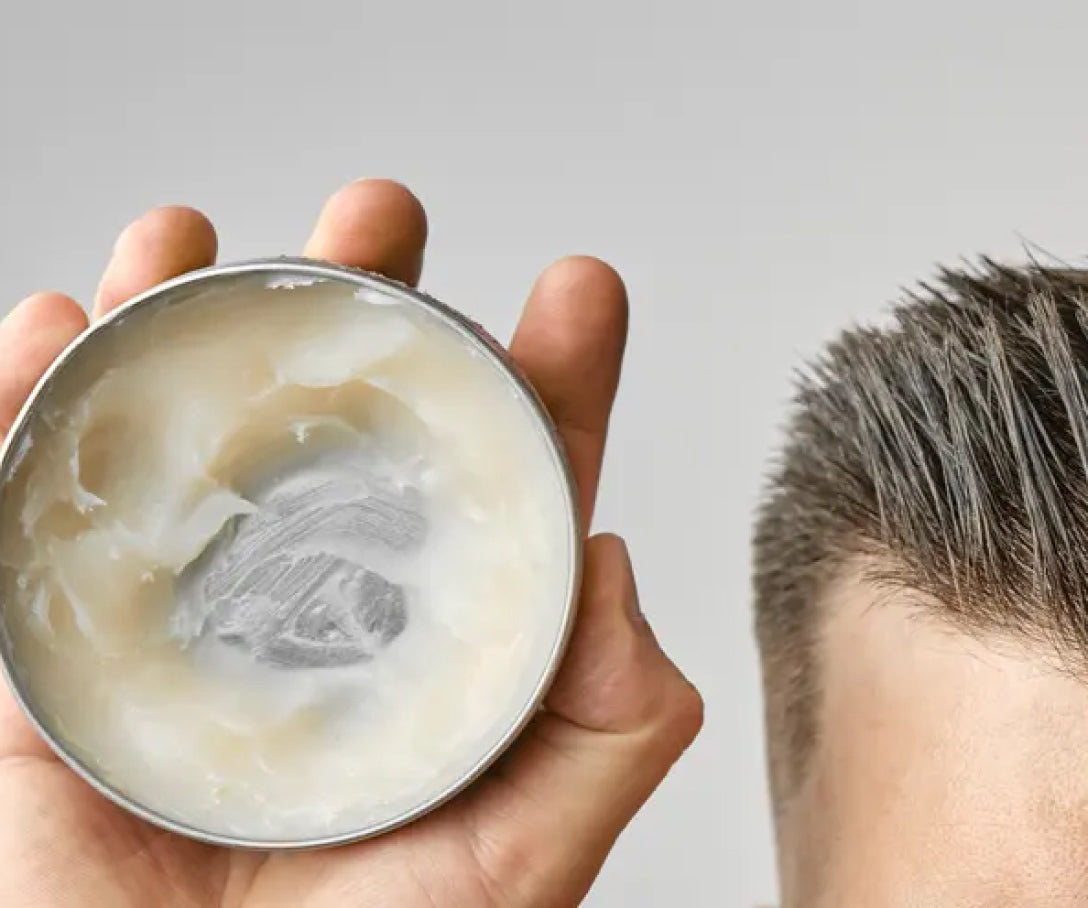
What Are You Really Consuming When Buying Popular Hair Clay Brands?
Share
In the quest for the perfect hairstyle, many of us turn to hair clay, a popular styling product that promises texture, hold, and a matte finish. But have you ever stopped to consider what you're really putting on your hair and scalp every day? We decided to investigate the ingredients in some of the most popular hair clay brands, and what we found might surprise you.
The Ingredient Breakdown
After examining the ingredient lists of various well-known hair clays, we discovered that each product typically contains around 29 ingredients.
Here's the shocking part:
• only 51.72% of these ingredients are "natural".
• while a significant 48.28% are synthetic.

This nearly even split between natural and synthetic components raises important questions about the potential long-term effects of these products on our health.
The Health Implications
Using hair clay with a high percentage of synthetic ingredients daily can have several negative health impacts over time. Here’s a closer look at some common synthetic ingredients found in these products and their potential effects:
-
Parabens: These are used as preservatives to extend the shelf life of the product. However, parabens have been linked to hormone disruption, which can lead to reproductive issues and even increase the risk of certain cancers.
-
Phthalates: Often used to enhance the flexibility and longevity of the fragrance in hair clays, phthalates are known endocrine disruptors. They can interfere with hormone function and are associated with a variety of health issues, including infertility and developmental disorders.
-
Synthetic Fragrances: These can consist of a cocktail of chemicals, many of which are not disclosed on the label. Synthetic fragrances have been linked to allergies, dermatitis, respiratory distress, and potential effects on the reproductive system.
-
Petrolatum and Mineral Oils: While these ingredients can help to seal in moisture, they can also clog pores and prevent the scalp from breathing, leading to issues like acne, scalp irritation, and hair follicle damage.
-
Silicones: While silicones can provide a smooth and shiny finish, they can build up on the hair and scalp over time, potentially leading to dryness, breakage, and scalp issues such as dandruff.
The Natural Alternative
On the flip side, the 51.72% of natural ingredients in these products often include beneficial components like beeswax, kaolin clay, and various plant extracts. These ingredients can help nourish and protect the hair without the adverse effects associated with synthetic chemicals. However, the relatively low percentage of natural ingredients means that the benefits are often overshadowed by the potential harm from the synthetic components.
Conclusion: What Should You Do?
Given the high percentage of synthetic ingredients in most popular hair clays and their potential long-term health risks, it’s worth considering a few changes:
-
Read Labels Carefully: Be more vigilant about reading ingredient lists and understanding what each component does. Look for products with a higher percentage of natural ingredients.
-
Opt for Natural Alternatives: There are brands out there that prioritize natural, organic ingredients. These may be a bit more expensive, but investing in your health is worth it.
Your hairstyle is an important aspect of your personal style, but it shouldn’t come at the cost of your health. By being more informed about what’s in your hair products and making smarter choices, you can achieve the perfect look without compromising your well-being.
